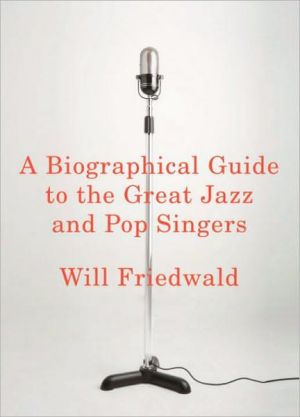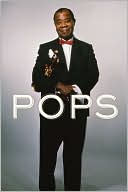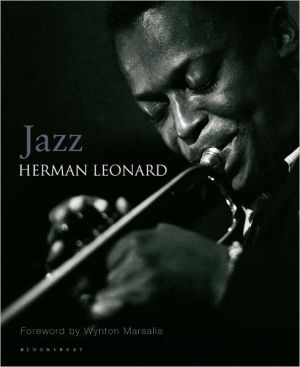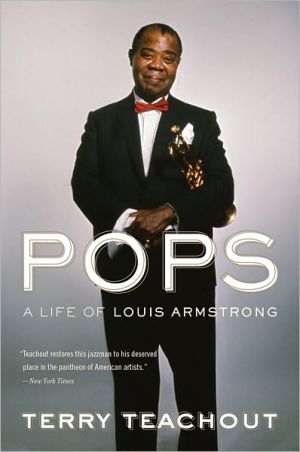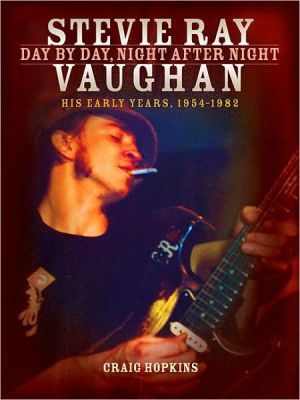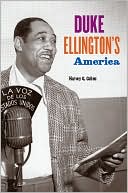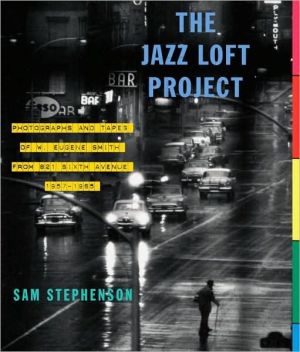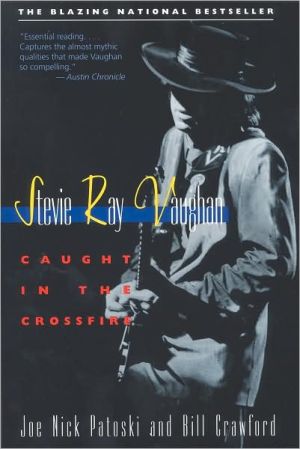A Biographical Guide to the Great Jazz and Pop Singers
Will Friedwald’s illuminating, opinionated essays—provocative, funny, and personal—on the lives and careers of more than three hundred singers anatomize the work of the most important jazz and popular performers of the twentieth century. From giants like Ella Fitzgerald, Louis Armstrong, Frank Sinatra, and Judy Garland to lesser-known artists like Jeri Southern and Joe Mooney, they have created a body of work that continues to please and inspire. Here is the most extensive biographical and...
Search in google:
Will Friedwald’s illuminating, opinionated essays—provocative, funny, and personal—on the lives and careers of more than three hundred singers anatomize the work of the most important jazz and popular performers of the twentieth century. From giants like Ella Fitzgerald, Louis Armstrong, Frank Sinatra, and Judy Garland to lesser-known artists like Jeri Southern and Joe Mooney, they have created a body of work that continues to please and inspire. Here is the most extensive biographical and critical survey of these singers ever written, as well as an essential guide to the Great American Songbook and those who shaped the way it has been sung. The music crosses from jazz to pop and back again, from the songs of Irving Berlin and W. C. Handy through Stephen Sondheim and beyond, bringing together straightforward jazz and pop singers (Billie Holiday, Perry Como); hybrid artists who moved among genres and combined them (Peggy Lee, Mel Tormé); the leading men and women of Broadway and Hollywood (Ethel Merman, Al Jolson); yesterday’s vaudeville and radio stars (Sophie Tucker, Eddie Cantor); and today’s cabaret artists and hit-makers (Diana Krall, Michael Bublé). Friedwald has also written extended pieces on the most representative artists of five significant genres that lie outside the songbook: Bessie Smith (blues), Mahalia Jackson (gospel), Hank Williams (country and western), Elvis Presley (rock ’n’ roll), and Bob Dylan (folk-rock). Friedwald reconsiders the personal stories and professional successes and failures of all these artists, their songs, and their performances, appraising both the singers and their music by balancing his opinions with those of fellow musicians, listeners, and critics. This magisterial reference book—ten years in the making—will delight and inform anyone with a passion for the iconic music of America, which continues to resonate throughout our popular culture. The Barnes & Noble Review Will Friedwald is one opinionated fellow. His 811-page Biographical Guide to the Great Jazz and Pop Singers, ten years in the making, celebrates both the famous and obscure pop singers of the past century, and every last one of its essays is filled with passion, high praise, and occasionally, vitriol. The end result is a highly personal guide likely to entertain, educate, and occasionally infuriate -- exactly the attributes one wants in a pop culture encyclopedia.
From Rosemary Clooney (1928–2002) \ \ Both the Westbury and the Honolulu concerts were unbelievably moving, the first one especially so. A lot of us were aware, even if we didn’t want to admit it, that this was going to be a farewell appearance, and we were also on edge because this was very shortly after the tragedy of September 11, 2001. Rosemary had been ending all her concerts that fall with “God Bless America,” and, as she told me afterward, she had been inviting the audience to join her for the second chorus. In New York, however, no one waited; the crowd started singing along with her from the first note. Rosemary was visibly moved, as was everyone else. She obviously was thinking about that when she got to the conclusion of the Honolulu show. If you thought her version of “Brazil” was heartbreaking, you should hear what she does with “God Bless America”; if anything, it’s even more amazing in that she reminds us that Irving Berlin’s number is not an institution, not an anthem, but a song, to be interpreted and sung from the heart like any other. You feel, as always, as if she’s singing about something that means everything to her. It doesn’t matter whether it’s a country, a child, a lover, or sweet Kentucky ham.\ \ From Bing Crosby (1903–1977)\ \ Another later album, Songs I Wish I Had Sung (The First Time Around), was essentially Crosby’s way of acknowledging that he wasn’t the only male singer to create hits and standards. Longtime Decca associate Milt Gabler came up with the idea, and also that of using musical director Jack Pleis. Crosby offers “Thanks for the Memory” in recognition of the singing skills of Bob Hope and, ignoring the song’s transformation into a Madison Avenue jingle, restores the bittersweet feeling Hope had projected when he introduced it in his movie debut, The Big Broadcast of 1938. In lines like “no frills, no fuss—hooray for us,” Crosby shows that he fully appreciates the song’s melancholy ironies. However, in retrospect the album makes it plain that Crosby introduced more great songs into the cultural bloodstream than everybody else put together. \ \ From Vic Damone (born 1928) \ \ In one major respect, Damone, even more than Sinatra, was a perfect singer for the early postwar period: He was part of an era; Sinatra created one. Damone was much more likely to sing Italian songs, both traditional and contemporary, than Francis Albert, and Mercury producers Berle Adams and Mitch Miller gave him quite a few: “You’re Breaking My Heart,” “Just Say I Love Her,” “Here in My Heart,” “To Love You.” The late forties and fifties were the international years of pop, in which songs from all over the globe landed on American charts. . . . In the second half of the nineties Damone reentered our consciousness on a significantly higher level. After a protracted absence from New York, he was suddenly appearing regularly at Carnegie Hall (both in various all-star tribute concerts and in a solo show) and at Rainbow and Stars. He was singing extraordinarily well, and not just for a man on the cusp of seventy—smooth and clear with a voice that had deepened, perhaps, but hadn’t exactly darkened. The delivery was smooth and the pitch was effortless, as proved by a package of thirty standards that he recorded in 1996. \ \ From Bobby Darin (1936–1973) \ \ Darin’s ongoing popularity might have surprised even him. In the twenty-first century, he is a disproportionately large influence, especially on such younger Italo-styled boy crooners as Tony DeSare, Peter Cincotti, and especially Michael Bublé. “Bobby didn’t have Nat King Cole’s voice and he didn’t have James Dean’s looks,” as Darin’s longtime colleague Nick Venet put it, “but he would step out onstage and become everything you ever thought was a star.” \ \ From Doris Day (born 1922) \ \ On her first commercial session, Day and Brown chart the course of what would be one of the great careers in the recording industry, starting with “Dig It,” a jive tune in which her vocal is introduced by the band chanting “Dig it, Doris!” on the vocal chorus, and dig it she does, showing herself already the equal of Miller’s Marion Hutton (who also recorded it), Tommy Dorsey’s Connie Haines, or the other Dorsey’s Helen O’Connell, or any other perky canary who specialized in rhythm numbers. And she gets a groove going in Cole Porter’s “Let’s Be Buddies.” . . . Doris Day was an instant success in pictures: It’s no exaggeration to say the public took one look (and one listen) and she could do no wrong. Not just beautiful, not just a great singer, she possessed that kind of charisma that could be choreographed but not created. Day launched a film career that was, ultimately, more rewarding for us than it was for her. She remained one of Hollywood’s top leading ladies for the next two decades, spending roughly ten years as the girl next door and an additional ten as the girl next door who might just sleep with you if you had a name like Rock or Cary and had some kind of a gimmick to trick her into it. . . . In spite of Melcher’s machinations, Doris Day was probably the biggest female multimedia hit maker of the fifties, steadily turning out chart singles and top-grossing pictures. Dinah Shore, who had been around longer, had a bigger broadcasting career, but couldn’t touch Day in pictures; Judy Garland had a shorter but more spectacular film career, but wasn’t utilized as much on recordings and radio as she should have been. Paramount tried to make Rosemary Clooney the next Doris Day, but she never caught on in pictures. Day was the sole female singer to come from the band world and make the transition to solo stardom and pictures. \ \ From Ella Fitzgerald (1917–1996)\ \ I already knew that Fitzgerald was the greatest female singer who ever sang the American songbook. Her voice was pure silk, it was perfume, it was a frothy pink cloud, it was champagne, it was the stuff that dreams are made of; her intonation and her time were unimaginably astonishing. Above all, she knew how to sing a melody: Even when she played with one, she never screwed around with it; even when she was scatting for chorus after chorus, she never made herself more important than the song. Like Sinatra, she was the beginning and the end, setting an impossibly high bar for jazz singers and female singers in particular that could never be exceeded or even matched. \ \ From Judy Garland (1922–1969) \ \ Then, in 1939, Garland not only became an emerging star but shot to the upper pantheon of the immortals with The Wizard of Oz, not only the major vehicle of her career, but quite possibly the greatest of all movie musicals (and in my opinion the greatest film ever made, thank you very much). With “Over the Rainbow,” Garland took the art of yearning to new levels. The notes themselves, with their operatic octave leap in the first interval, symbolized a reaching out, an optimistic striving for a greater good. Surrounding the seventeen-year-old trouper with three of the world’s finest song and dance character men and a top score by lifelong friend Harold Arlen, Oz showed the world how good the movie musical could be. One of the tragedies of Garland’s life is that she never surpassed Oz; still, after this she was the preeminent leading lady of the Hollywood musical. No woman in Hollywood—not Alice Faye, Betty Grable, Rita Hayworth, Ginger Rogers, Eleanor Powell, or Betty Hutton—could possibly compete with her. \ \ From Dick Haymes (1916–1980) \ \ It’s Haymes’s first two long-playing projects, produced by Capitol Records in 1955 and 1957 (Moondreams and Rain or Shine), that offer what is easily the finest singing of his entire career. When Capitol gave him a shot, he was offered his choice of musical director, and while he could have gone with such established greats as Nelson Riddle (who had actually directed a few of his final Decca dates in 1952), Billy May, or longtime collaborator Gordon Jenkins, he instead recruited a young Canadian conductor named Ian Bernard. Featuring a small string section and prominent clarinet solos from the raspy-toned Jimmy Giuffre, these two sets offer Haymes at his deepest, singing ballads at a gut level reminiscent of Sinatra on In the Wee Small Hours and the best of Billie Holiday. Even though he flies at an altitude very close to Sinatra here, I don’t think that Haymes has ever sounded more like himself.\ \ From Billie Holiday (1915–1959) \ \ As Holiday ascended the ladder, and was given the star treatment more and more, something was gained as well as lost. If the 1940–42 sessions don’t have the loose spontaneity of the earlier music, the compensating factor is that Holiday is given a better class of song. In this period, standards tested by time (even by then) are the rule and ephemeral new tunes are the exception. The songs she does here are almost all classics: “I Cover the Waterfront,” “Love Me or Leave Me” (both with the verses), and even “Gloomy Sunday,” the aforementioned Hungarian suicide song that had infiltrated the Englishspeaking world (via Paul Robeson and Hal Kemp) five years earlier. The 1936 “It’s a Sin to Tell a Lie” is an unexpected choice; it’s a rather old-fashioned song that sounds more like 1916. Fats Waller made a terrific record of it swinging and gagging it up (exactly what the song needed), while Ruth Etting did a lovely version that’s completely straight. Sung in medium dance time, Holiday’s treatment is somewhere in between; she doesn’t jazz it just for the sake of it, but she isn’t afraid to interpret the song and personalize it either. \ \ From Peggy Lee (1920–2002) \ \ With “Lover,” Lee was anticipating a period when singers of both the jazz and pop varieties would transform all kinds of standards into sambas, to bring the rhythms of Rio and Havana to music from Broadway. Around the time of “Lover,” she applied a similar treatment to “Just One of Those Things” (also done with Jenkins). From there she continually refined the idea: In 1955, she crafted a mambo treatment of “Ooh, That Kiss,” a long-forgotten pre-Hollywood Harry Warren song. The orchestration includes Latin percussion, flutes, a male chorus of bandsmen chanting “cha-cha-cha,” and a modulation near the end, but it’s still a much simpler and subtler treatment than “Lover” or “Just One of Those Things.” By continuing to pare down, Lee gradually brought this ideal of Latinization to a new level. . . . Lee’s very sporadic final twenty-five years of performing and recording include some nonblues highlights as well. One of her post-Capitol triumphs is a longish medley of Rodgers and Hart songs on the 1977 Peggy Lee in Concert at the London Palladium. This concludes with a stunning treatment of “Who Are You?,” a song from The Boys from Syracuse almost completely unheard in the jazz-pop sphere, which demonstrates that Lee knows her Richard Rodgers as well as her Ma Rainey. \ \ From Frank Sinatra (1915–1998)\ \ Sinatra achieved living legend status long before he turned thirty, and well before 1950 the first of many generations began growing up not just fascinated but mesmerized by him. He turned his private life into his own personal mythology: We were entranced by his affairs and his high-rolling, high-living bachelor lifestyle (as in “Luck Be a Lady”), and we also admired his paternal, familial side (as in “Soliloquy”). We admired his campaigning for civil rights as well as his connections with presidents from Roosevelt to Kennedy to Nixon and Reagan. We envied his unending list of boudoir conquests and even though we hardly approved of his consorting with notorious figures of the underworld, we still couldn’t take our eyes off him. He was everything we wanted to be: swinging, romantic, erotic, melancholy, and even a little bit dangerous. . . . He continued to tour up to the end of 1994, and in February 1995 gave his last public performance. It was a brilliant but short six-song set mounted as part of his annual charity golf event, which proved he was more than ready to return to the road anytime he wanted. It was just like Sinatra, who famously described himself as “a symmetrical man, almost to a fault,” to pick 1995 to end an era: In addition to marking his eightieth year on the planet, that season also signified sixty years since he first “went pro” with the Hoboken Four. Now he was ready to retire for real. As critic David Hajdu once wrote, “To hell with the calendar—The day that Frank Sinatra [is finished], the 20th Century is over.” It also seems typical of Sinatra that he managed to take the millennium with him. \ \ From Kate Smith (1907–1986) \ \ If ever anyone was an unfortunate victim of changing attitudes, it’s Kate Smith. By the sixties, she was routinely derided for her musical and political conservatism—not to mention her obesity. Other than those who would make her the rather large butt of such ungallant humor, who remembers Kate Smith today? Mainly grandmothers with first names that have fallen off the face of the earth—names like Mabel, Gertrude, and Edna. Yet at the height of her career, during the World War II era, Smith was one of the most respected women in America. In a nationwide poll conducted in 1942, only Eleanor Roosevelt and Helen Hayes rivaled her for overall popularity. Three years earlier, the Roosevelts summoned her to the White House to sing for the king and queen of England, and introduced her simply with: “Your Majesties, this is Kate Smith. This is America.” \ \ From Jo Stafford (1917–2008)\ \ When all is said and done, who was Jo Stafford? A pop singer and a comic, a ballad singer and a folksinger, a band singer and a group singer, a swinger and a mourner (not to mention a radio and TV star, wife, and mother). She’s a riddle to be solved, with no simple answers, and she haunts you so that after hearing her just once, you can’t ever unhear her. \ \ From Barbra Streisand (born 1942) \ \ Love Is the Answer is Streisand’s best album in forty years, possibly ever. She sings with a subtlety and reserve that, in her canon, is rare if not unprecedented. For once, she doesn’t sing as if she’s trying to beat a song to death, to overwhelm it with sheer chops. For once, she doesn’t express every emotion with an outrageous stylization that nearly negates it, or makes it seem like so much empty posturing. There are times here when Streisand is so laid back, particularly by her standards, that it almost seems like a Diana Krall record with Streisand’s vocals electronically inserted. (No one was denying that there was electronic tampering in the album—Columbia released a deluxe double-disc edition, in which one volume features the vocal tracks with full orchestra, the other with Krall and her quartet. I actually like both.) \ \ From Mel Tormé (1925–1999) \ \ There are those who feel that Tormé’s Indian summer at the top was limited by the man’s own personality—charismatic as he could sometimes be, he was hardly the paragon of sheer lovableness that Tony Bennett was and is. Nor did he inspire the treatment accorded Sinatra, that combination of movie star, political bigwig, and American icon. I’m proud to say I knew Mel fairly well from around 1984, when he played New York again for the first time after a few years’ hiatus, to his last gig at Carnegie in June 1996. Mel could be an absolute sweetheart, but he wasn’t always the nicest guy in the world, and he was never the most modest. He could be charitable and generous and surprisingly petty in the same breath. \ \ From Margaret Whiting (born 1924) \ \ Whiting was one of six white female pop singers whose stardom was cemented during the war years and whose work is still listened to today; the others were Dinah Shore, Kay Starr, Peggy Lee, Jo Stafford, and Doris Day. (It’s indicative of the talentspotting abilities of Johnny Mercer that four of the six, including Whiting, were essentially launched by Capitol Records.) Kay Starr’s singing was drenched with Western jazz and blues, Peggy Lee’s was no less jazzy or bluesy but with Scandinavian re-straint, Doris Day’s was pure sunshine, and Jo Stafford’s favored reserved optimism with a touch of melancholy. \ \ From Michael Feinstein (born 1956) \ \ His specialty is slow ballads; Rodgers and Hart’s “Isn’t It Romantic” isn’t just a piece of material to him, it’s a motto. When he does a tune that goes faster, it’s just that—a faster love song, like “Something’s Gotta Give.” He’s also made efforts to do out-and-out big band–style swing, and while this isn’t his forte, he is, in fact, very credible when singing fast-moving, Broadway-style numbers in double time or even faster—plenty of these are on The MGM Album. While singing fast isn’t the same as swinging, Feinstein makes you feel pedantic for bothering about the difference. \ \ From Folk Rock: Bob Dylan (born 1941) \ \ As he gets older, Dylan seems to be growing closer to, rather than further away from, his roots. In doing so, he confounded his critics by releasing three of his best albums in his sixties: Love and Theft (2001), Modern Times (2006), and Together Through Life (2009). All three are heavily blues-oriented: Love and Theft has no shortage of Southern-style shuffle rhythms: “Tweedle Dee & Tweedle Dum” uses a New Orleans backbeat familiar to followers of Crescent City R&B or even that fans of Bo Diddley would enjoy; Together Through Life is primarily hard-edge blues rock. Yet Dylan is never limited by the blues: “Sugar Baby,” the final track on Love and Theft, has a main melody and even a bridge obviously taken from the Tin Pan Alley spiritual “The Lonesome Road”; there are also allusions to “Darktown Strutters’ Ball” (he sings of characters doing “the Darktown Strut”) and “Ol’ Man River.” The second track on Together Through Life is “Life Is Hard,” which, despite the basic-blues title, feels more like a traditional torch song, in the manner of “Maybe You’ll Be There.” \ \ From Rock ’n’ Roll: Elvis Presley (1935–1977) \ \ Presley’s innovation was neither in sounding black nor in sounding like a hillbilly, but in the brilliant way he embraced all three strains of pop music as they existed in the early fifties: rhythm and blues or black pop (and with it gospel); country music or mid-American pop; and the music of the mainstream, which, at its finest, was represented by singers who had jazz and big band experience and who sang songs from Broadway shows. The country and blues influences were probably what most attracted the teenagers of 1956, but in retrospect Presley is clearly a crooner, who comes out of a very clear-cut tradition of the finest male singers of the Great American Songbook, especially Bing Crosby, Al Jolson, Billy Eckstine, Dean Martin, and, to an extent, Frank Sinatra—and also the great crooners of the blues, like Louis Jordan, and country, like Jimmie Rodgers and Milton Brown. \ \ From Blues: Bessie Smith (1894–1937) \ \ More than seventy years after her tragically early death (at age forty-three), it seems increasingly clear that Bessie Smith may be the most important female voice of the early twentieth century. Who else comes close? Back in the day, both Ethel Waters, who also sang the blues, and Ruth Etting, who didn’t, probably sold more records, but neither is as well remembered and well reissued as Bessie Smith. (Nor, for that matter, is Kate Smith, who shared Bessie’s name and her body type, but little else.) If you were to stop a hundred people on Fifth Avenue in 2010, and read them a list of singers who were stars in the acoustic era, Enrico Caruso, Al Jolson, and Bessie Smith are probably the only names anyone would recognize. \ \ From Country and Western: Hank Williams (1923–1953) \ \ Still, we would be celebrating Hank Williams even if he had never written a single note or a single word of a song, for the same reason that we celebrate Sinatra and Bennett. Williams was a brilliant interpreter, no matter who the original author was, on the level of the great singers of the show-music-oriented American songbook. His voice was dark and woody, with a strong Southern accent—when he announces the song “I Can’t Help It (If I’m Still in Love with You)” he drops the “L” in “help,” but he pronounces it properly when he sings it.
This table of contents includes an alphabetical list of all the artists featured in the dictionary: individual artists, the five “extras” (iconic singers in other genres), and those included in multiple artist entries. These multiple artist groupings, which are in more or less chronological order, are also listed below for your reference.Introduction Individual Artists Lorez Alexandria Ernestine Anderson Ivie Anderson Julie Andrews The Andrews Sisters Harold Arlen Lil Hardin Armstrong Louis Armstrong Fred Astaire Gene Austin Harry Babbitt Mildred Bailey Pearl Bailey Chet Baker Josephine Baker Tex Beneke Tony Bennett Andy Bey Connee Boswell and the Boswell Sisters Al Bowlly Dee Dee Bridgewater Hadda Brooks Cleo Brown Michael Bublé Jackie Cain Ann Hampton Callaway Cab Calloway Eddie Cantor Una Mae Carlisle Hoagy Carmichael Barbara Carroll Betty Carter Ray Charles June Christy Peter Cincotti Buddy Clark Rosemary Clooney Freddy Cole Nat King Cole Natalie Cole Russ Columbo Perry Como Eric Comstock Harry Connick, Jr. Chris Connor Barbara Cook Sam Cooke Sir Noel Coward Bing Crosby Jamie Cullum Vic Damone Bobby Darin Sammy Davis Jr. Doris Day Blossom Dearie Matt Dennis Johnny Desmond Marlene Dietrich Alfred Drake Jimmy Durante Bob Dylan Ray Eberle Bob Eberly Billy Eckstine Cliff Edwards Kurt Elling Skinnay Ennis Ruth Etting Alice Faye Michael Feinstein Gracie Fields Ella Fitzgerald Helen Forrest Aretha Franklin Judy Garland Eydie Gormé Robert Goulet Buddy Greco Adelaide Hall Annette Hanshaw Mary Cleere Haran Allan Harris Marion Harris Johnny Hartman Dick Haymes Bill Henderson Woody Herman Al Hibbler Billie Holiday Shirley Horn Lena Horne Helen Humes Hutch (Leslie Hutchinson) Betty Hutton Marion Hutton Alberta Hunter Mahalia Jackson Eddie Jefferson Herb Jeffries Clarence Johnstone Al Jolson Etta Jones Jack Jones Louis Jordan Sheila Jordan Kitty Kallen Howard Keel Richard Kiley Teddi King Eartha Kitt Irene Kral Roy Kral Diana Krall Cleo Laine Frankie Laine Lambert, Hendricks, & Ross Dorothy Lamour Turner Layton Steve Lawrence Barbara Lea Julia Lee Peggy Lee Abbey Lincoln Julie London Nick Lucas Nellie Lutcher Gloria Lynne Gordon MacRae Kevin Mahogany Andrea Marcovicci Dean Martin Mary Martin Johnny Mathis Susannah McCorkle Audra McDonald Ray McKinley Carmen McRae Johnny Mercer Mabel Mercer Ethel Merman Helen Merrill The Mills Brothers Guy Mitchell Matt Monro Joe Mooney Helen Morgan Lee Morse Mark Murphy Rose Murphy Anita O’Day Patti Page Jackie Paris King Pleasure Elvis Presley Louis Prima Arthur Prysock John Raitt Ramona Lou Rawls Johnnie Ray Martha Raye Della Reese Dianne Reeves Irene Reid Ann Richards Jimmy Rushing (Little) Jimmy Scott Daryl Sherman Dinah Shore Bobby Short Nina Simone Ginny Simms Frank Sinatra Carol Sloane Bessie Smith Kate Smith Jeri Southern Jo Stafford Kay Starr Dakota Staton Barbra Streisand Maxine Sullivan Sylvia Syms Jack Teagarden Shirley Temple Teri Thornton Martha Tilton Mel Tormé Sophie Tucker George “Bon Bon” Tunnell Rudy Vallee Sarah Vaughan Bea Wain Fats Waller Helen Ward Dinah Washington Ethel Waters Elizabeth Welch Margaret Whiting Lee Wiley Andy Williams Hank Williams Joe Williams Cassandra Wilson Julie Wilson Nancy Wilson Edythe Wright Multiple ArtistsThe Birth of the Croon: Cliff Edwards, Nick Lucas, Rudy Vallee, and Russ Columbo Torch Singers and Flappers: Marion Harris, Ruth Etting, Helen Morgan, and Annette Hanshaw African Americans Abroad: Adelaide Hall, Josephine Baker, Elisabeth Welch, and Alberta Hunter There’ll Always Be an England: Hutch, Layton & Johnstone, and Gracie Fields Female Band Singers I Benny’s Babes: Helen Ward, Martha Tilton, and Helen Forrest Sing a Song of Ellington: Ivie Anderson, Herb Jeffries, and Al Hibbler Sing a Song of Miller: Male (Mostly) Band Singers I—Bob Eberly, Ray Eberle, Marion Hutton, Johnny Desmond, Tex Beneke, and Ray McKinley Singing Songwriters: Hoagy Carmichael, Harold Arlen, and Johnny Mercer Female Bandsingers II—Big Bands into Pop: Edythe Wright, Bea Wain, Ginny Simms, Kitty Kallen Male Band Singers II—Exceptional Boychicks: Harry Babbitt and George “Bon Bon” Tunnell Hollywood Divas: Alice Faye, Dorothy Lamour, Shirley Temple, and Betty Hutton Two Inimitables: Sir Noel Coward and Marlene Dietrich Fats’s Femme Followers: Lee Morse, Ramona, Cleo Brown, Lil Hardin Armstrong, Una Mae Carlisle, Julia Lee, Nellie Lutcher, Rose Murphy, and Hadda Brooks Big Pop (Male): Frankie Laine, Johnnie Ray, Guy Mitchell, Johnny Mathis, and Andy Williams Hipsters and Bopsters: King Pleasure, Eddie Jefferson, Jackie Cain, Roy Kral, Irene Kral, Ann Richards, and Cleo Laine Lee Wiley’s Boston Connection: Teddi King and Barbara Lea Leading Ladies: Barbara Cook and Julie Andrews Leading Men—In Defense of the Broadway Baritone: Alfred Drake, John Raitt, Gordon MacRae, Howard Keel, and Robert Goulet Dinah’s Daughters—Soulful Ladies and Local Favorites: Etta Jones, Gloria Lynne, Teri Thornton, Irene Reid, and Lorez Alexandria Two Soulful Gentlemen: Sam Cooke and Lou Rawls Blossom’s Buds and Dearie’s Daughters: Barbara Carroll, Daryl Sherman, and Ann Hampton Callaway Rock Goes Standards!: From Connie Francis to Rod Stewart Dynasty: Freddy Cole and Natalie Cole Contemporary Male Jazz Singers: Allan Harris, Kevin Mahogany, and Kurt Elling Contemporary Cabaret: Andrea Marcovicci, Mary Cleere Haran, Michael Feinstein, and Eric Comstock Harry Connick Jr. and the Retro Crooner Boychicks: Harry Connick Jr., Michael Bublé, Jamie Cullum, and Peter Cincotti ExtrasFolk-Rock: Bob Dylan Gospel: Mahalia Jackson Rock ’n’ Roll: Elvis Presley Blues: Bessie Smith Country and Western: Hank Williams
\ Publishers WeeklyIn this passionately opinionated encyclopedia of the old-school virtuosos of the American songbook, music writer Friedwald (Sinatra!) celebrates 200-odd performers of jazz and pop standards, from the mid-20th-century titans--Louis Armstrong, Bing Crosby, Ella Fitzgerald, Frank Sinatra--to latter-day acolytes like Diana Krall and Harry Connick Jr., with a raft of unjustly obscure singers in between. (Forget the Andrews Sisters--get a load of the Boswell Sisters!) Friedwald is all about the music; he primly shies away from his subjects' scandal-prone personal lives, but accords each a substantial career retrospective, selected discography and wonderfully pithy interpretive essay. His tastes are wide-ranging and idiosyncratic: he plumbs the artistry of Jimmy Durante's and Shirley Temple's novelty voices, decries the bombastic narcissism of "sacred monster" Barbra Streisand--"I remain completely unconvinced that she's a person who needs people"--and considers perky Doris Day's pop gems "the most erotic vocalizing you'll ever hear." However unconventional, his judgments are usually spot-on, as in his compelling reassessment of Elvis as the last great Crosbyesque crooner. Friedwald's exuberant medley is that rarest of things: music criticism that actually makes you sit up and listen. (Nov. 2)\ \ \ \ \ Library JournalFriedwald (Stardust Melodies: A Biography of Twelve of America's Most Popular Songs) presents a thorough, detailed reference work devoted to a diverse collection of vocalists. All of the usual suspects, such as Ella Fitzgerald, Frank Sinatra, Mel Tormé, Judy Garland, Bing Crosby, and Billie Holiday, are included. This 832-page single volume, though, also finds room for more recent figures like Harry Connick Jr. and Natalie Cole as well as folk and pop singers better known for other contributions to the entertainment industry, e.g., Jack Cassidy, Aretha Franklin, Woody Herman, and Noël Coward. Friedwald covers well over 200 singers and includes biographical detail and information about their importance and legacy.Verdict Friedwald freely shares his opinions—he is dismissive of some recordings and praises others effusively. Although several of the articles might rankle die-hard fans of some of the performers, Friedwald is generally spot-on if a bit hyperbolic in his assessments. Fans of jazz and pop music of the 20th century (precious little rock here, though) will find this a feast. Essential for all public libraries.—James E. Perone, Univ. of Mount Union, Alliance, OH\ \ \ Dennis DrabelleIn this mammoth volume, jazz critic Will Friedwald does for jazz and pop vocalists what David Thomson has done so brilliantly for the movies in his New Biographical Dictionary of Film…The author also acts as a consumer guide, steering the reader toward particular songs or albums.\ —The Washington Post\ \ \ \ \ Jason BerryFriedwald is an elegant stylist whose passion for the music shimmers through the pages…[he] has written a book about love, the songs and singers…who captured him in their world of enchantment.\ —The New York Times\ \ \ \ \ The Barnes & Noble ReviewWill Friedwald is one opinionated fellow. His 811-page Biographical Guide to the Great Jazz and Pop Singers, ten years in the making, celebrates both the famous and obscure pop singers of the past century, and every last one of its essays is filled with passion, high praise, and occasionally, vitriol. The end result is a highly personal guide likely to entertain, educate, and occasionally infuriate -- exactly the attributes one wants in a pop culture encyclopedia.\ Covering everyone from the obscure (Nellie Lutcher, anyone?) to the revered (Tony Bennett), Friedwald includes assessments ranging from Al Jolson to Michael Bublé, but his focus remains squarely fixed on the post-World War II, pre-rock era, with his highest praise justifiably reserved for the brilliant work of Frank Sinatra and Ella Fitzgerald.\ He is particularly eloquent on Ella, nailing exactly why her recordings never date: "Fitzgerald was always emotionally true to whatever she was singing. She could make you walk on air with a happy song and want to walk on razor blades on a downer."\ His research is prodigious and the breadth of his knowledge is matched only by the depth of his passion. For all the doorstopper heft of the book, he is capable of the pithy phrase that sums up an entire career: Jo Stafford's style, for example, is pegged as "reserved optimism with a touch of melancholy," an assessment that precisely captures the sensibility behind such epic hits as "You Belong to Me."\ It's an idiosyncratic guide, to be sure. Friedwald devotes just as much space to Audra McDonald's meager four-CD discography as he does to the fifty-year legacy of Johnny Mathis. Fortunately, the passion of his beliefs only occasionally gets the better of him, as when an eight-page screed against Barbra Streisand runs so over the top that one can only wonder what the heck La Streisand ever did to him.\ Friedwald refers to jazz historian Dan Morgenstern as "that encyclopedia who walks like a man." In paying tribute to the unquestioned giants of twentieth-century pop music, walking encyclopedia Friedwald has done his idols proud.\ --Tom Santopietro\ \ \
